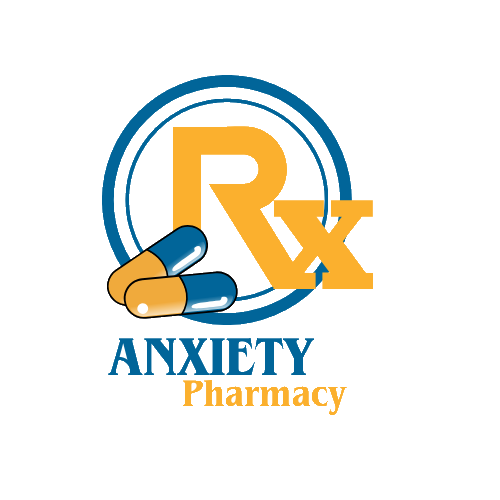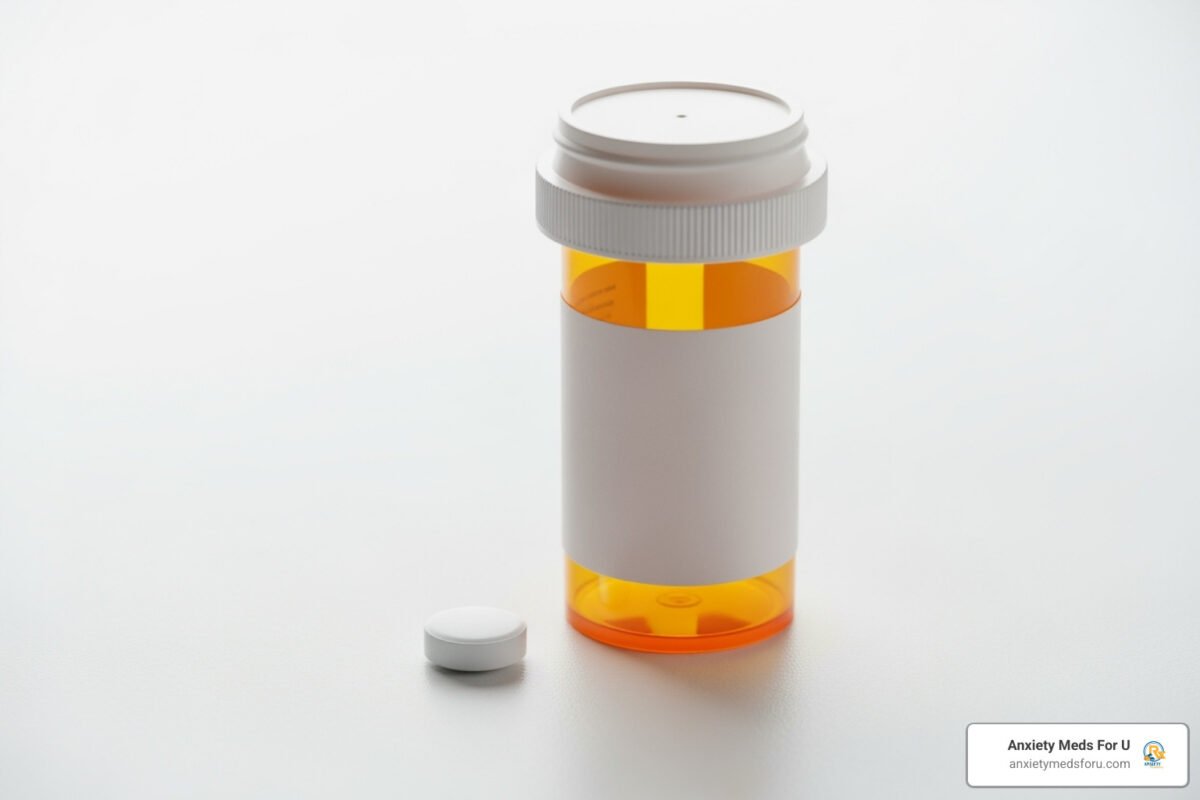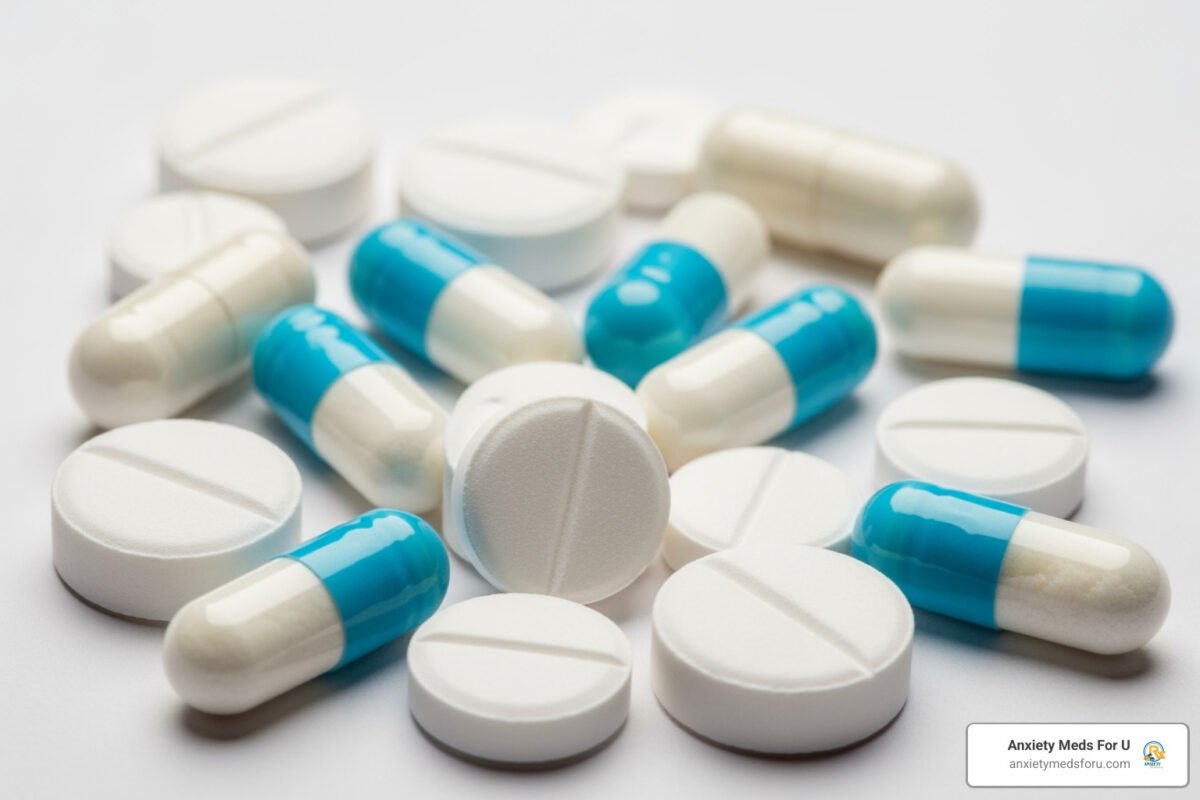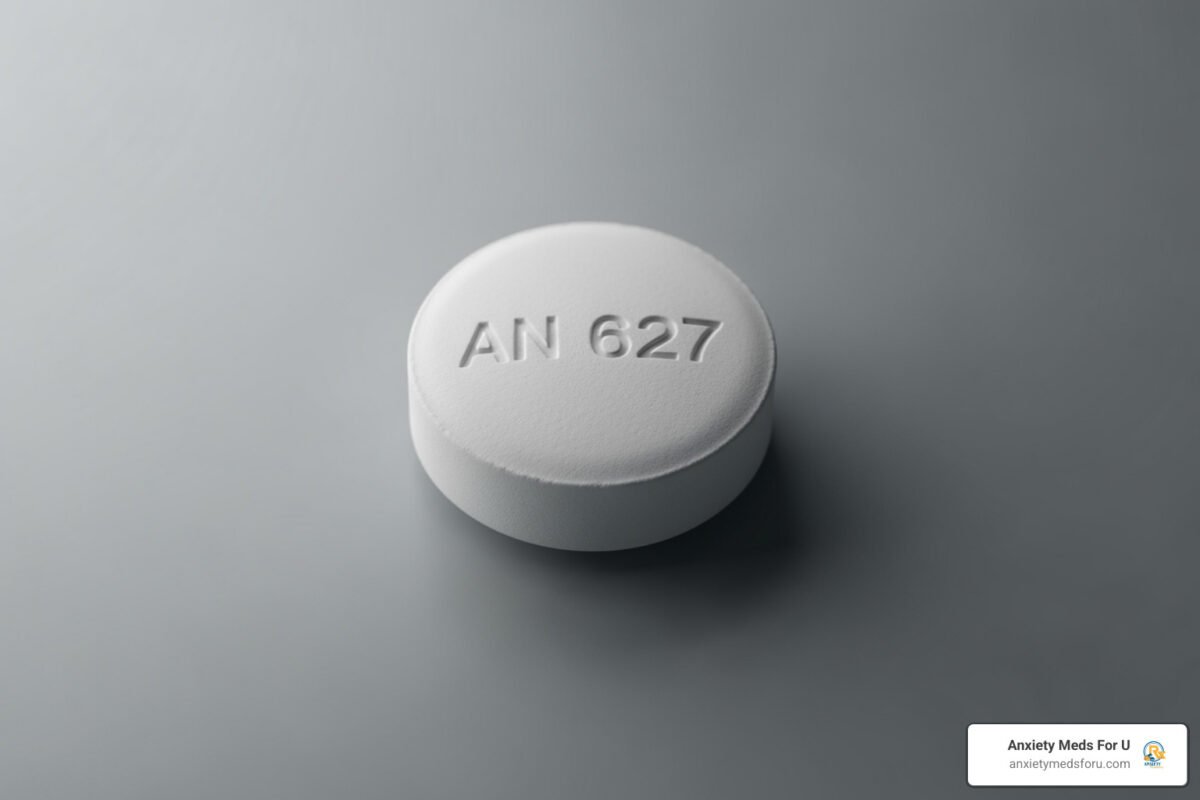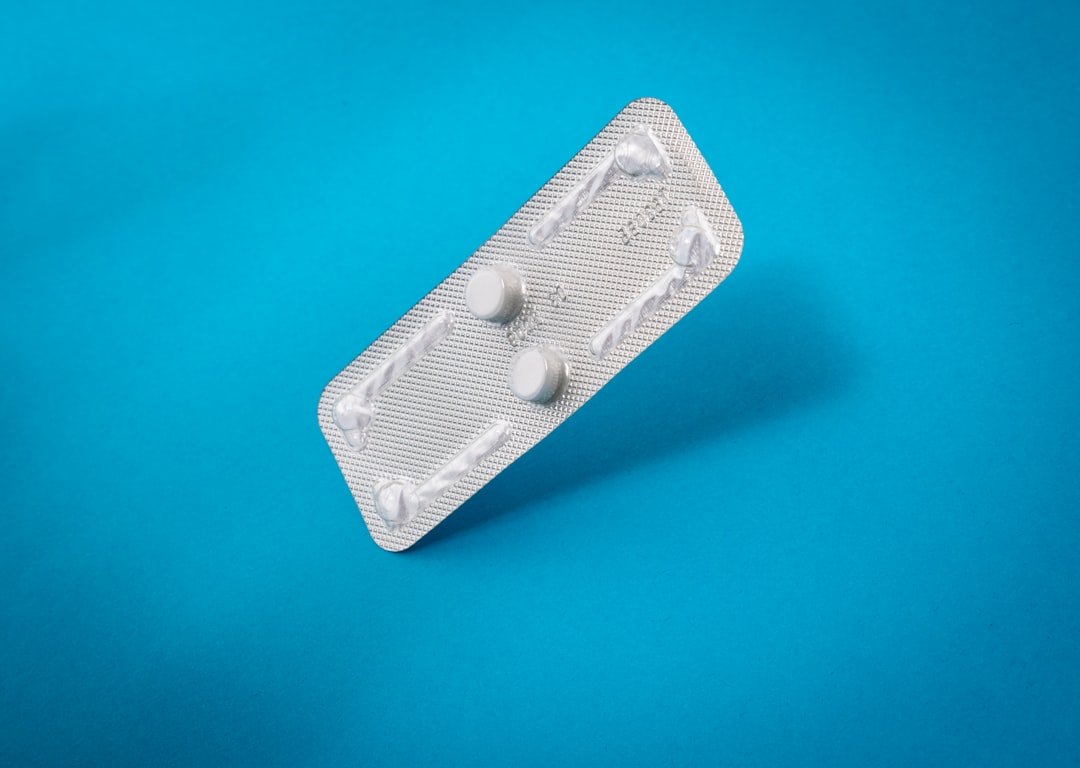All About Tramadol Effects

Understanding Tramadol as a Pain Management Option
Tramadol is an atypical opioid analgesic prescribed for moderate to severe pain that works differently from traditional opioids. Here’s what you need to know:
Key Facts:
- What it is: Prescription pain medication with dual mechanism of action
- Primary use: Moderate to severe pain when other medications aren’t effective
- How it works: Binds to opioid receptors AND blocks serotonin/norepinephrine reuptake
- Forms available: Immediate-release tablets, extended-release formulations, oral solution
- Legal status: Schedule IV controlled substance (requires prescription)
- Common side effects: Nausea, dizziness, constipation, drowsiness
Serious risks include:
- Seizures (especially at higher doses)
- Serotonin syndrome when combined with certain medications
- Respiratory depression and overdose potential
- Physical dependence and withdrawal symptoms
Tramadol stands out among pain medications because it combines opioid activity with antidepressant-like effects. This dual action makes it effective for certain types of pain, particularly neuropathic pain, but also creates unique risks that differ from traditional opioids.
The medication gained significant use in recent years – in 2021, tramadol was the 41st most commonly prescribed medication in the United States with over 15 million prescriptions. However, this popularity came with concerns, leading to its reclassification as a controlled substance in 2014.
Understanding both the benefits and risks of tramadol is crucial for safe use. While it can provide effective pain relief for many people, it requires careful medical supervision and awareness of potential interactions and side effects.
I’m John, and through my work helping individuals access affordable prescription medications, I’ve seen how tramadol can be both an effective pain management tool and a medication that requires careful consideration. My experience has shown me the importance of providing clear, accurate information about medications like tramadol to help people make informed decisions about their healthcare.
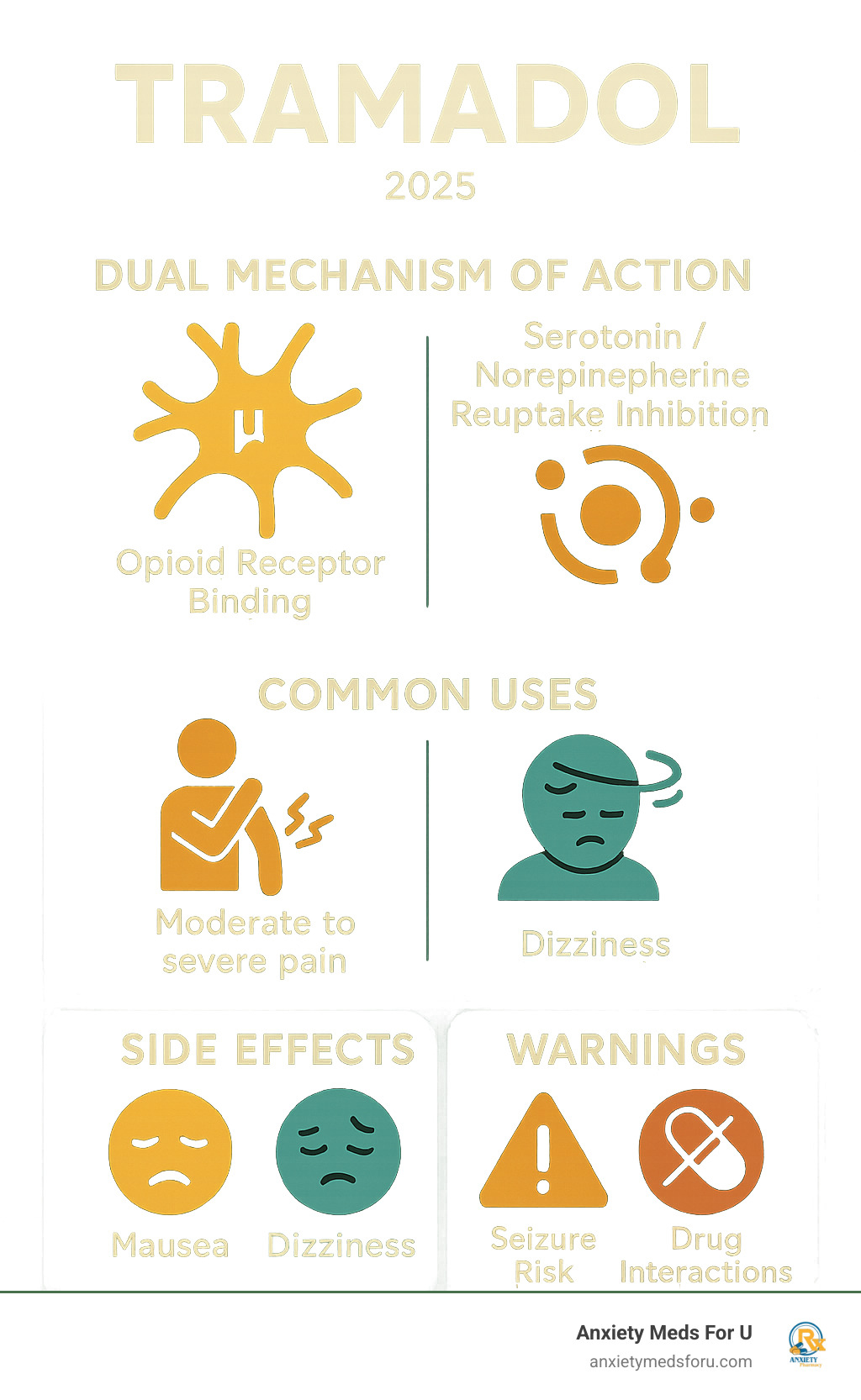
What is Tramadol and How Does It Work?
Think of tramadol as the multitasker of pain medications. While most opioids work in just one way, tramadol takes a two-pronged approach that makes it quite different from its traditional opioid cousins.
The first way tramadol tackles pain is through the familiar opioid pathway. It acts as what we call a “weak agonist” at the mu-opioid receptors in your central nervous system. Essentially, it mimics your body’s natural pain-fighting chemicals (endorphins) to dial down how you feel pain. But here’s where it gets interesting – tramadol itself isn’t actually that strong at this job.
The real magic happens in your liver. When tramadol gets processed by a liver enzyme called CYP2D6, it transforms into a much more potent compound called O-desmethyltramadol (or M1 for short). This metabolite is up to 700 times better at binding to those opioid receptors than the original tramadol. It’s like tramadol is a mild-mannered superhero that becomes incredibly powerful once it changes form.
Here’s something fascinating: not everyone’s liver processes tramadol the same way. Some people are “ultra-rapid metabolizers” who convert too much tramadol into M1 too quickly, potentially leading to stronger effects and more side effects. Others are “poor metabolizers” who don’t make enough M1, so tramadol might not work as well for them.
But wait, there’s more. tramadol‘s second superpower comes from its ability to work like an antidepressant. It blocks the reuptake of two important brain chemicals – serotonin and norepinephrine. By keeping more of these neurotransmitters available in your brain and spinal cord, tramadol activates additional pain-blocking pathways. This dual action is why tramadol can be particularly effective for nerve-related pain.
When you take tramadol by mouth, your body absorbs about 75% of it. You’ll typically feel peak effects around 2 hours after taking it, while the M1 metabolite peaks at about 3 hours. The medication hangs around for roughly 6-7 hours before your body eliminates it, mostly through your urine.
For those who want to dive deeper into the science, there’s detailed scientific research on Tramadol’s pharmacology available.
Approved Uses for Pain Management
Tramadol has earned its place in medicine cabinets for managing moderate to severe pain when other options haven’t done the trick. It’s like having a reliable backup plan when your usual pain relief strategies fall short.
Post-surgical pain is one of tramadol‘s most common applications. After you’ve been under the knife, your body needs serious pain relief to heal properly, and tramadol can provide that crucial comfort during recovery.
For people dealing with long-term pain, extended-release tramadol offers around-the-clock relief. Osteoarthritis sufferers often find it helpful when joint pain becomes too much for over-the-counter medications to handle. The wear and tear on joints can create persistent discomfort that needs consistent management.
Tramadol really shines when it comes to neuropathic pain – that’s pain caused by damaged nerves. Thanks to its antidepressant-like effects, it can tackle this tricky type of pain better than many traditional opioids. If you’re curious about this specific type of pain, there’s helpful information on neuropathic pain that explains it in detail.
Back pain is another area where tramadol proves its worth. Whether it’s from an injury, poor posture, or just the wear and tear of daily life, chronic back pain can be debilitating, and tramadol can provide the relief needed to get back to normal activities.
Off-Label and Investigational Uses
Sometimes doctors prescribe tramadol for conditions beyond its official stamp of approval. These “off-label” uses are based on clinical experience and research, even if they haven’t gone through the full regulatory approval process yet.
Fibromyalgia patients sometimes find relief with tramadol when first-line treatments aren’t cutting it. This condition causes widespread pain and fatigue that can be incredibly challenging to manage, and tramadol‘s unique dual action can sometimes help where other medications haven’t.
People with restless legs syndrome might also benefit from tramadol, particularly when other treatments have failed. That irresistible urge to move your legs, especially at night, can seriously disrupt sleep and quality of life.
Diabetic neuropathy is another area where tramadol‘s nerve pain-fighting abilities come in handy. When high blood sugar damages nerves over time, the resulting pain, numbness, and tingling can be extremely uncomfortable.
Perhaps more surprisingly, some doctors have used low-dose tramadol for premature ejaculation. While this isn’t a first-line treatment and remains somewhat controversial due to misuse potential, it shows how tramadol‘s effects on brain chemistry can have unexpected applications.
Researchers continue to explore other potential uses for tramadol through ongoing clinical trials, always looking for new ways this versatile medication might help people manage pain and other conditions.
Understanding the Risks and Side Effects of Tramadol
While tramadol can be a powerful ally against pain, it’s crucial to understand its potential risks and side effects. Like any medication, it comes with a baggage of possibilities, some common and mild, others serious and potentially life-threatening. We always emphasize that the decision to use tramadol involves weighing its benefits against these risks.

One of the most significant concerns with tramadol is its potential to cause seizures. This risk is dose-dependent, meaning it increases with higher doses, and it’s also heightened when combined with certain other medications. Another serious risk is Serotonin Syndrome, a potentially life-threatening condition that can occur when tramadol is taken with other drugs that increase serotonin levels in the brain (like many antidepressants).
Of course, as an opioid, tramadol carries the risk of respiratory depression – slowed or shallow breathing – which can be fatal. This is a primary concern with any opioid, and it’s why monitoring is so important, especially when starting the medication or increasing the dose. The risk of overdose is also very real. In 2011 alone, 21,649 emergency room visits in the United States were related to tramadol, highlighting the serious nature of these risks.
To give you a clearer picture, we’ve put together a quick comparison of common versus serious side effects:
| Common Side Effects | Serious Side Effects |
|---|---|
| Nausea | Seizures |
| Dizziness | Serotonin Syndrome |
| Constipation | Slowed Breathing |
| Headache | Severe Allergic Reaction |
| Drowsiness | Hallucinations |
| Vomiting | Reduced Adrenal Function |
| Dry Mouth | Low Blood Pressure (Hypotension) |
| Sweating | Hypoglycemia (Low Blood Sugar) |
| Loss of Appetite | Hyponatremia (Low Sodium) |
| Muscle Weakness | Increased Pain Sensitivity |
Common and Serious Side Effects of Tramadol
Let’s break down the side effects a bit more. When you start taking tramadol, you might experience some of these common, typically mild, and often temporary side effects as your body adjusts:
- Nausea
- Dizziness
- Constipation
- Headache
- Drowsiness
- Vomiting
- Dry mouth
- Sweating
- Loss of appetite
- Muscle weakness
While these can be uncomfortable, they often improve over time. However, it’s always wise to discuss them with your doctor if they persist or become severe.
On the other hand, some side effects are much more serious and require immediate medical attention. These include:
- Seizures: As mentioned, this is a significant risk, especially with higher doses or in susceptible individuals.
- Serotonin syndrome: Watch out for symptoms like anxiety, restlessness, fast heartbeat, fever, sweating, muscle spasms, twitching, nausea, vomiting, or diarrhea. This can be very serious.
- Slowed breathing: This is a hallmark of opioid use and can be life-threatening. If you or someone you know experiences slowed breathing, long pauses between breaths, or shortness of breath while on tramadol, seek emergency help immediately.
- Severe allergic reaction: Though rare, symptoms like rash, itching, swelling (especially of the face, tongue, or throat), severe dizziness, or trouble breathing warrant immediate medical attention.
- Hallucinations: Seeing or hearing things that aren’t there.
Other serious but less common side effects can include adrenal gland problems, hyponatremia (low sodium levels), and hypoglycemia (low blood sugar). Always keep an open line of communication with your healthcare provider about any new or worsening symptoms.
Potential for Misuse and Addiction with Tramadol
It’s a common misconception that because tramadol is “atypical” or weaker than some other opioids, it carries less risk of dependence and addiction. However, this is simply not true. Tramadol does have a significant dependence liability, and like other opioids, it can lead to both physical and psychological dependence.
If you take tramadol regularly, even as prescribed, your body can become accustomed to its presence. This is physical dependence. If you then stop taking it suddenly, you may experience opioid-like withdrawal symptoms. These can include nervousness, panic, sweating, difficulty sleeping, runny nose, sneezing, cough, pain, chills, nausea, uncontrollable shaking, diarrhea, or even hallucinations. It’s why we always recommend gradually reducing the dose under medical supervision if you need to stop taking tramadol.
Beyond physical dependence, there’s also the risk of psychological dependence, which is often what we refer to as addiction. This is characterized by a compulsive desire to use the drug, despite negative consequences. Signs of misuse might include:
- Taking higher doses than prescribed.
- Using the medication more frequently than directed.
- “Doctor shopping” to obtain multiple prescriptions.
- Feeling an intense craving for the drug.
- Continuing to use tramadol even when it causes problems in your life (e.g., at work, in relationships).
The FDA recognized these risks, and in 2014, tramadol was reclassified as a Schedule IV controlled substance in the United States, placing stricter controls on its prescribing and dispensing. Understanding the full scope of opioid dependence is crucial for safe pain management, and organizations like the Alcohol and Drug Foundation provide invaluable resources.
Drug Interactions and Contraindications
Navigating medications can sometimes feel like a delicate dance, and tramadol is no exception. It can interact with various other drugs, potentially leading to serious side effects or reducing its effectiveness.
One of the most critical interactions is with antidepressants, particularly Selective Serotonin Reuptake Inhibitors (SSRIs) and Monoamine Oxidase Inhibitors (MAOIs). Combining tramadol with these medications significantly increases the risk of Serotonin Syndrome. As we mentioned, this is a potentially life-threatening condition caused by too much serotonin in the brain. It’s a serious concern, and we strongly advise against certain combinations. You can find comprehensive guidance on opioid and antidepressant combinations to avoid.
Tramadol also interacts dangerously with other central nervous system (CNS) depressants. These are substances that slow down brain activity, and combining them with tramadol can lead to severe drowsiness, profound sedation, slowed breathing, coma, and even death. This includes:
- Alcohol: Never drink alcohol while taking tramadol. The combination can be fatal.
- Benzodiazepines: Medications like alprazolam (Xanax), lorazepam (Ativan), or diazepam (Valium) can drastically increase the sedative and respiratory depressant effects of tramadol.
- Other opioids: Combining tramadol with other opioid pain relievers can compound the risks of respiratory depression and overdose.
- Sedatives, tranquilizers, and muscle relaxers.
Beyond interactions, there are specific situations or pre-existing conditions where tramadol should not be used at all. These are known as contraindications:
- History of substance abuse: Given its potential for dependence, tramadol is generally contraindicated in individuals with a history of substance use disorder.
- Seizure disorders: If you have a history of seizures or epilepsy, tramadol can lower your seizure threshold, increasing the risk of seizures.
- Severe kidney or liver disease: Tramadol is metabolized in the liver and excreted by the kidneys. Severe impairment of these organs can lead to the drug building up in your system, increasing the risk of side effects and toxicity.
- Severe respiratory depression or bronchial asthma: Unless necessary equipment is available, it’s contraindicated.
- Gastrointestinal obstruction: Including paralytic ileus.
- Children: Tramadol is contraindicated in children aged 12 or younger, and in those aged 18 or younger following tonsillectomy or adenoidectomy due to the risk of severe breathing problems.
Always provide your doctor with a complete list of all medications, supplements, and herbal products you are taking, as well as your full medical history, to ensure tramadol is safe for you.
Safe Use and Legal Status
When it comes to tramadol, playing it safe isn’t just smart—it’s essential. Think of your prescription as a roadmap that your doctor has carefully crafted just for you. Following it exactly means taking the right amount, at the right times, for the right duration. No shortcuts, no “just this once” exceptions.
If you’re prescribed extended-release tramadol, here’s something crucial: never crush, chew, break, or dissolve those tablets or capsules. I know it might seem harmless, but doing so releases all the medication at once instead of slowly over time. This can lead to a dangerous overdose that could be fatal.

Many people use tramadol for short-term pain relief, especially after surgery or injury. But if you’ve been taking it regularly and it’s time to stop, don’t go cold turkey. Your doctor will likely suggest gradually reducing your dose—what we call tapering. This helps your body adjust and prevents those uncomfortable withdrawal symptoms we talked about earlier.
When should you pick up the phone and call your doctor? If your pain isn’t getting better or actually gets worse, that’s definitely a red flag. New or unexpected side effects are another reason to reach out. But some situations need immediate attention—if you notice slowed breathing, severe dizziness, confusion, or any thoughts of self-harm, don’t wait. Get help right away.
Overdose signs are serious business. We’re talking about severe drowsiness, pinpoint pupils, very slow breathing (or no breathing at all), and being completely unresponsive. If you see these signs in yourself or someone else, call emergency services immediately. The statistics are sobering—in 2011 alone, over 21,000 emergency room visits in the United States were related to tramadol.
Safe Disposal and Legal Status
Let’s talk about what happens to leftover tramadol. Maybe your pain improved faster than expected, or your doctor switched you to something else. Whatever the reason, you’ve got pills sitting around—and that’s actually a bigger deal than you might think.
The safest bet is returning unused medicine to a pharmacy. Most pharmacies have take-back programs or special disposal bins designed exactly for this purpose. It’s like having a secure recycling center for medications. This ensures your leftover tramadol doesn’t end up in the wrong hands or harm the environment.
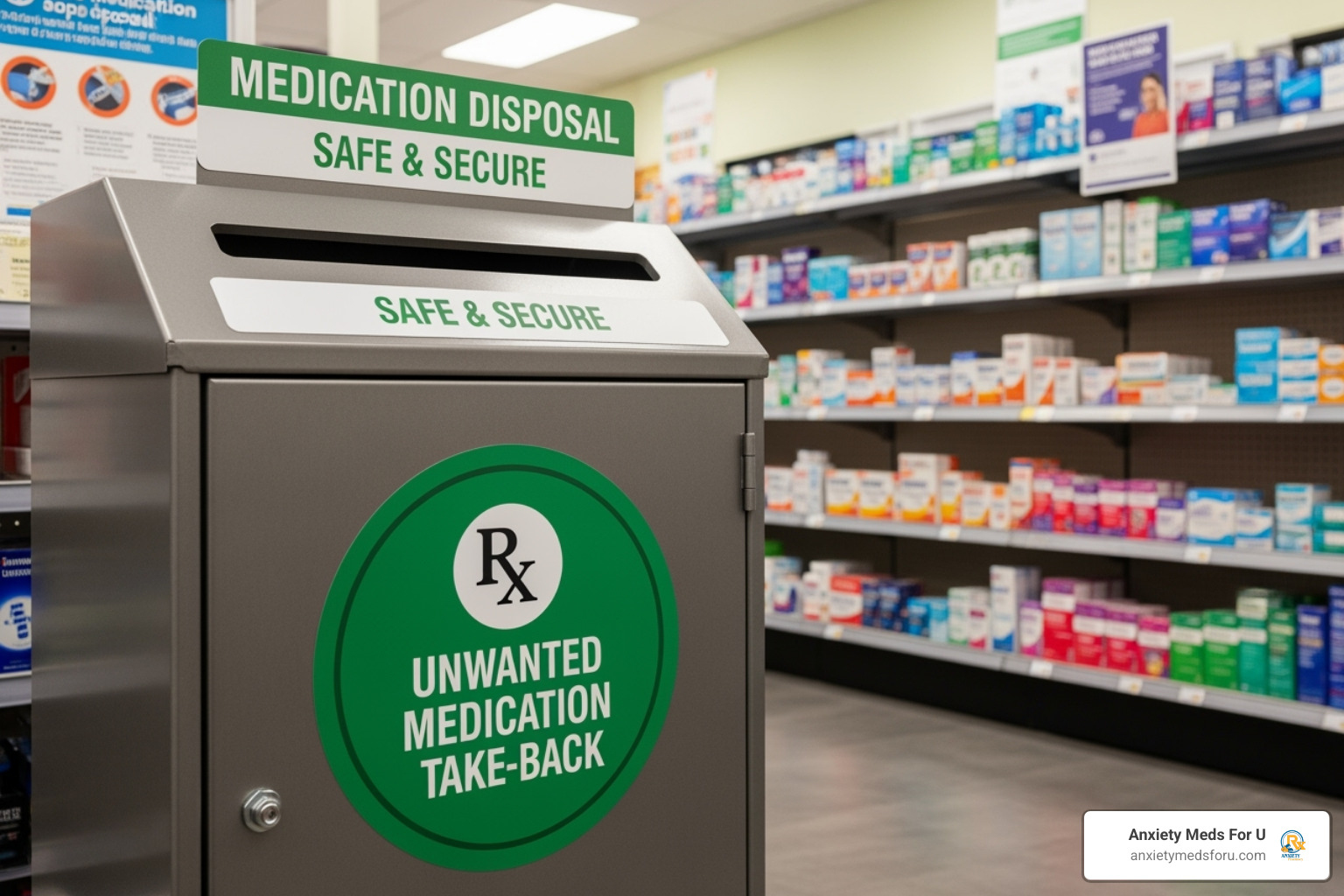
While you have tramadol in your home, storage matters enormously. Keep it somewhere secure, completely out of sight and reach of children and pets. Accidental ingestion can be deadly, especially for little ones. A locked medicine cabinet or a high shelf in your bedroom works well. For more guidance on safe disposal practices, returnmed.com.au offers excellent resources.
The legal landscape around tramadol has evolved significantly. In the United States, tramadol became a Schedule IV controlled substance in August 2014. This change happened because authorities recognized its potential for abuse and dependence, despite being “milder” than some other opioids. Schedule IV means it has legitimate medical uses but requires careful regulation.
Different countries take different approaches. In Australia, tramadol is classified as a Prescription Only Medicine (S4), while the United Kingdom treats it as a Class C controlled drug. These classifications aren’t arbitrary—they reflect each country’s assessment of tramadol‘s benefits versus its risks.
What does this mean for you? Simply put, tramadol is a legitimate, valuable pain medication that comes with serious responsibilities. The regulations exist to protect patients while ensuring people who genuinely need pain relief can access it safely.
Frequently Asked Questions about Tramadol
People considering tramadol often have similar concerns and questions. Let me address the most common ones I encounter to help you make informed decisions about this pain medication.
Can you drink alcohol while taking Tramadol?
This is one of the most important questions I get, and the answer is absolutely NO – you should never drink alcohol while taking tramadol. I can’t stress this enough because the combination can be deadly.
Here’s why mixing alcohol and tramadol is so dangerous: both are central nervous system depressants, which means they slow down your brain activity. When you combine them, these effects multiply rather than just add together.
The risks include dramatically increased drowsiness and dizziness that can make you feel completely disoriented. You might think you’re fine, but your reaction time and judgment are severely impaired. More seriously, this combination greatly increases your risk of respiratory depression – where your breathing becomes dangerously slow or even stops completely.
The potential for overdose skyrockets when alcohol enters the picture. What might normally be a safe dose of tramadol can become life-threatening when combined with even small amounts of alcohol. Emergency rooms see far too many cases where this combination has led to tragic outcomes.
My advice? If you need tramadol for pain management, skip the alcohol entirely. It’s simply not worth risking your life for a drink.
How long does it take for Tramadol to work?
The timing really depends on which form of tramadol you’re taking, and understanding this can help set realistic expectations for your pain relief.
With immediate-release (IR) forms like regular tablets or oral solutions, you’ll typically start feeling relief within 30 to 60 minutes. These are designed to get the medication into your system quickly when you need fast pain relief. The peak effect – when the medication is working its hardest – usually hits around 2 to 3 hours after you take it.
Extended-release (ER) forms work differently. These capsules or tablets are engineered to release tramadol slowly throughout the day, providing steady pain relief for up to 24 hours. The trade-off is that they have a slower onset – you won’t get that quick relief you might need for acute pain, but they’re excellent for managing chronic conditions where consistent pain control is the goal.
If you’re not feeling adequate pain relief within the expected timeframe, don’t increase your dose on your own. Contact your healthcare provider to discuss adjusting your treatment plan safely.
Is Tramadol used in veterinary medicine?
Yes, tramadol is commonly used in veterinary medicine for our furry friends, particularly dogs and cats. Veterinarians prescribe it for similar reasons we use it in humans – to manage moderate to severe pain.
The most common veterinary uses include post-surgical pain management to help pets recover comfortably after operations, and chronic pain conditions like arthritis that can significantly impact an older pet’s quality of life.
However, there are crucial differences you need to understand. Dosage calculations for animals are completely different from human doses and must be precisely calculated based on your pet’s weight, species, and specific condition. What’s safe for you could be toxic or even fatal for your pet.
Animals also metabolize tramadol differently than humans do. For example, dogs don’t produce as much of the active M1 metabolite that provides much of tramadol’s pain-relieving effects, which means the medication might work differently in them than it does in people.
Most importantly, tramadol must always be prescribed by a licensed veterinarian. Never, ever give your pet human medications without professional veterinary guidance. What seems like a kind gesture to help a suffering pet could end up causing serious harm or death. Only a vet can properly diagnose your pet’s pain and determine the right medication and dosage for safe, effective treatment.
If you’re concerned about your pet’s pain, schedule a consultation with your veterinarian rather than trying to help with human medications.
Conclusion
As we wrap up this comprehensive guide, I hope you now have a clearer picture of tramadol and its role in modern pain management. This fascinating medication truly stands apart from other pain relievers – it’s an atypical opioid that takes a dual approach to fighting pain, making it particularly effective for moderate to severe pain conditions, especially those involving nerve damage.
The numbers speak volumes about tramadol’s impact: with over 15 million prescriptions written in the US alone in 2021, it’s become a cornerstone of pain treatment for countless individuals. But as we’ve finded together, this popularity comes with important responsibilities.
What makes tramadol so unique – its combination of opioid activity with antidepressant-like effects – also creates a unique set of considerations. The potential for dependence and withdrawal symptoms is real, even when taken exactly as prescribed. The risk of serious side effects like seizures and serotonin syndrome requires vigilance. And those crucial interactions with other medications and alcohol can’t be ignored.
Throughout our discussion, I’ve emphasized one key theme: tramadol demands informed respect. It’s not just about taking a pill for pain – it’s about understanding what you’re putting in your body and how it might affect you. This means sticking strictly to your prescription, recognizing warning signs, and knowing when to reach out for help.
Don’t forget about safe disposal practices either. By returning unused medications to pharmacies and keeping them secure from children, we’re all doing our part to protect our communities from accidental exposure and misuse.
Tramadol can absolutely be a valuable ally in your fight against pain, but it works best when you’re fully informed about both its benefits and risks. I always encourage open, honest conversations with your healthcare provider about your pain management goals, your complete medical history, and any concerns that might arise.
For those seeking effective pain management solutions, Anxiety Meds For U provides access to a range of prescribed relief options, ensuring you have both the medications and information needed to make the best choices for your health and wellbeing.
